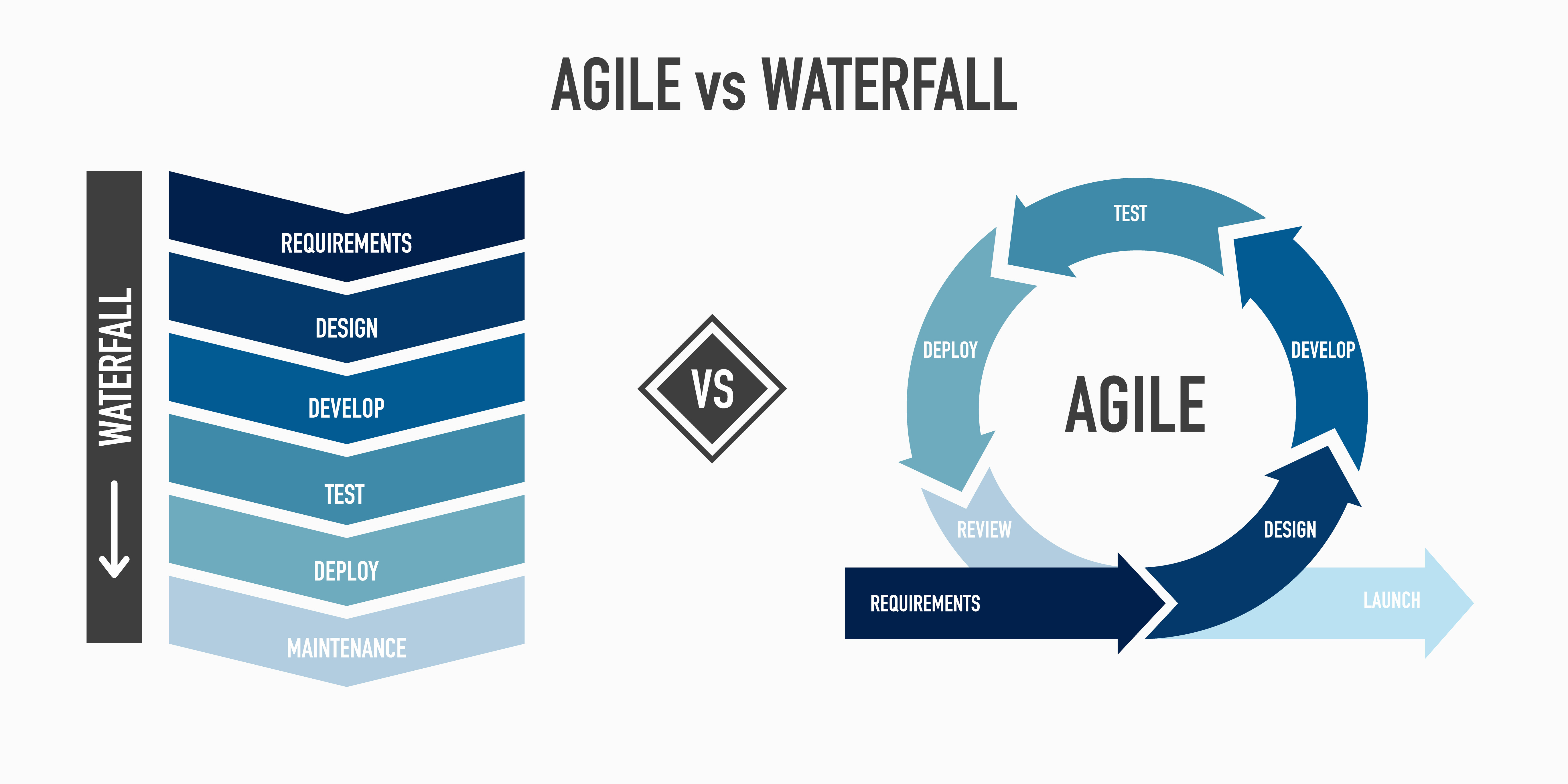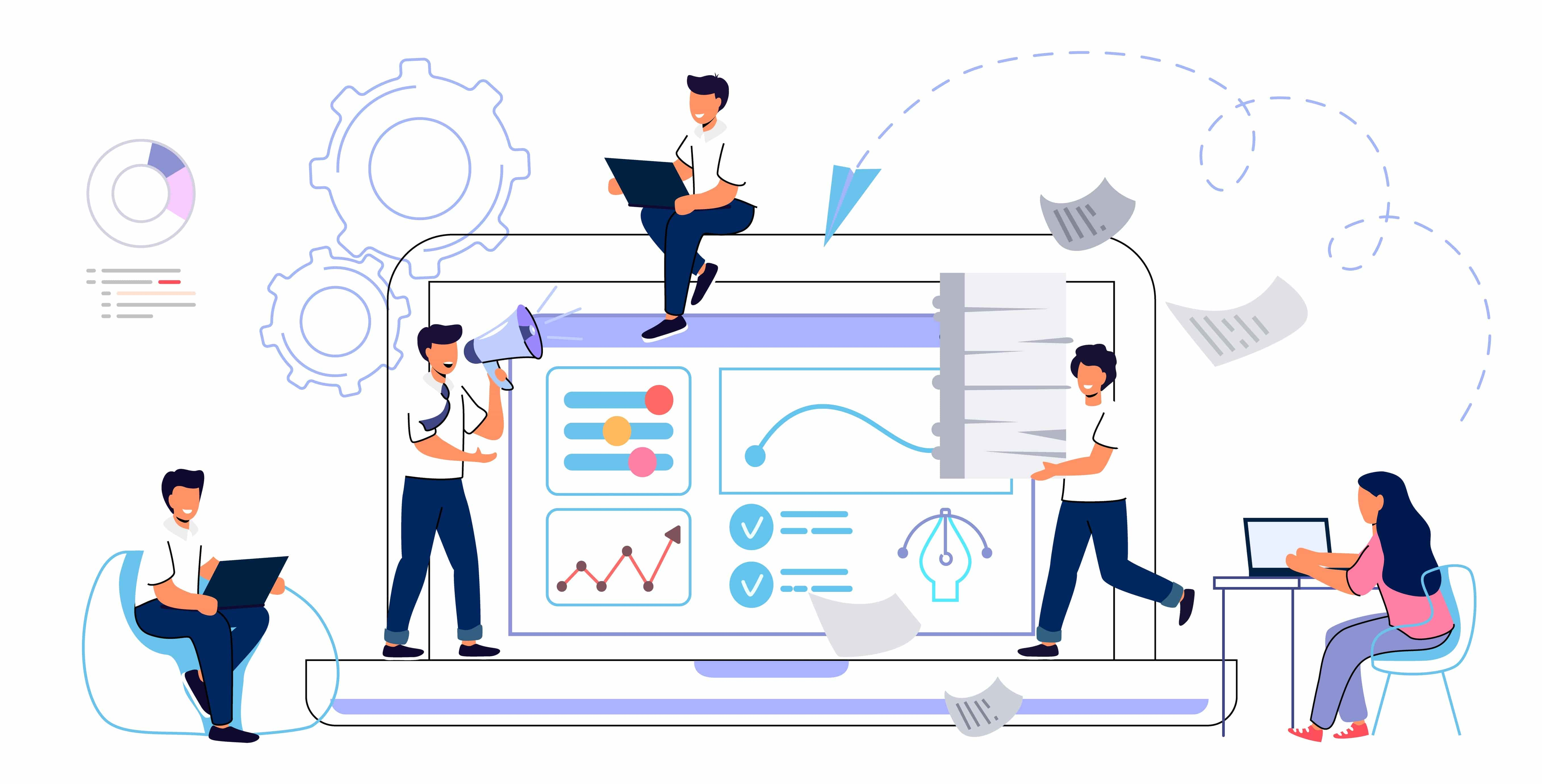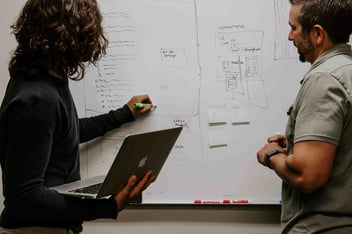Ever peeked behind the curtain of a software development team? Picture this: an orchestra, each player mastering their instrument, creating harmony from complexity. The conductor – a project manager perhaps – guides them all.
You see business analysts striking up conversations with market trends while product owners balance customer requirements and strategic vision artfully. UI designers, alongside front-end developers, paint user interfaces, while back-end developers ensure functionality.
Ah! And then there are the UX/UI designers sketching user experiences so seamlessly you’d think they’re mind readers. QA specialists carefully tune every note for perfection before DevOps engineers set it on stage in secure environments ready to captivate global audiences.
Sounds like music to your ears? Then, let’s dive deeper into understanding software development team roles and unraveling how Agile teams juggle projects differently than Waterfall ensembles…
Table Of Contents:
- Understanding the Structure of a Software Development Team
- Roles within a Software Development Team
- Agile vs Waterfall Methodologies in Software Development Teams
- The Role of Developers in a Software Development Team
- Importance of UX/UI Designers in Software Development
- Quality Assurance (QA) Specialists in Software Development Teams
- The Significance of DevOps Engineers in Software Development Teams
- The Impact of Different Contract Types on Software Development Projects
- FAQs about the Software Development Team
- Conclusion
Understanding the Structure of a Software Development Team
A software development team’s structure is not one-size-fits-all. Several factors, like project type and complexity, shape it.
The Impact of Project Type and Complexity on Team Structure
Every software project is unique. These differences can influence the size and composition of a development team. For instance, developing an intricate AI-based app needs more senior engineers than creating a simple website.
Diverse projects also require different roles in the team, such as business analysts for interpreting market trends or UX/UI designers for improving user experience.
Time Constraints and Budget Considerations in Team Structuring
Budgetary constraints often dictate the number of members of a software development team. Smaller budgets may lead to smaller teams with multi-skilled individuals, while larger budgets could accommodate specialized roles like UI designers or QA specialists.
Schedules also play their part; tight deadlines might mean getting extra hands on deck, thus expanding your Agile environment into a larger Agile team.
Remember that effective teams aren’t just about quantity but quality, too. It doesn’t matter if you have 50 developers when communication breaks between them.
No single formula guarantees success every time because it’s all contextual – it depends on customer requirements, available resources (budget allocated), and even how well teams work together.
So next time someone asks why your ten-person squad beat their hundred-strong army – tell them about understanding what they need first before deciding who they need.
Roles within a Software Development Team
The software development team is the engine room of any software project. It comprises professionals with diverse skills working together to transform an idea into a functional product.
The Role of Business Analysts in Bridging Business and Technology
Business analysts (BAs) are interpreters between the tech crew and stakeholders. Product managers assess market trends and align them with the overarching business strategy for revenue generation while bridging gaps between technology and business strategy. BAs work closely with product owners to translate customer requirements into clear specifications for the development team.
Product Owners – Ensuring Customer Requirements are Met
In Agile teams, we often find Product Owners managing vision evolution alongside customers’ changing demands. These guys focus on current projects and future enhancements, ensuring everything aligns perfectly with business goals.
Beyond these roles though, other vital members contribute immensely to achieving great software outcomes:
- A project manager who plans work schedules based on the budget allocated or timelines given by clients.
- In software design, UX designers are responsible for creating intuitive user interfaces that make apps usable and delightful too.
- The nifty software architect. They set out application structures, ensuring it meet technical requirements while considering potential risks in design process phases down the line as well.
Agile vs Waterfall Methodologies in Software Development Teams
The software development world is diverse, but two methodologies stand out – Agile and Waterfall. Both methods offer unique benefits that significantly influence the team structure and project completion focus.

Agile Teams – Optimal Team Size and High Coordination
When it comes to Agile teams, think of small size and high coordination. These dynamic squads often consist of a mix of roles, including product managers, UX/UI designers, team lead and developers, and QA specialists. In an agile environment, flexibility reigns supreme, with the ability to adapt quickly as customer business requirements change or new market trends emerge. Research shows this approach leads to better collaboration between team members, which results in faster delivery times for great software products.
In essence, each member becomes an extended part of your company’s engineering team, where every detail, from UI design to backend functionality, is meticulously crafted according to specific needs identified by the business analysts on board.
Waterfall Projects – Hierarchical Relations and Project Completion Focus
Moving onto waterfall projects, these follow a linear model emphasizing a hierarchical relation within its large-sized development teams. Studies reveal that despite their seemingly rigid nature compared to flexible, agile ones, they are highly effective when managing product life cycles with clearly defined stages, such as the planning work phase or test automation processes.
The beauty here lies in how different roles, like senior engineers responsible for code reviews or project managers overseeing budget allocation, come together, working towards one single goal – creating final products that meet both customer requirements and business goals.
So, whether you’re an established corporation or a startup deciding between Agile and Waterfall methodologies for your software development team structure, remember to weigh the pros and cons of each before making a decision. “The devil is in the details,” as they say – a reminder that even seemingly small decisions can have significant implications.
The Role of Developers in a Software Development Team
Developers are the foundation of any software development team. Their role is crucial as they breathe life into ideas and turn them into functional software.
Frontend developers, often considered the artists in the squad, use their creativity to design user interfaces that are not only visually appealing but also intuitive for users. They play with colors, shapes, and layouts to create an interface that speaks volumes about the product’s personality.
They’re like painters who start with a blank canvas (or screen) and fill it with elements that engage users while keeping usability at its core. Their goal? To ensure every click brings value to users’ experience.
User Interface – The Face of Your Software Product
If front-end developers are artists painting on canvases, then user interfaces (UI) are their masterpieces. Your customers see it when interacting with your software application or website.
A good UI can make all the difference between an app loved by millions or one forgotten among thousands in an app store. This shows how important this aspect of software development truly is.
Backend Developers – The Masterminds Behind Functionality
Moving onto our code wizards: back-end developers. If frontend developers give a face to your product, backend developers give it brains. They work tirelessly behind screens, writing complex codes to ensure smooth functionality.
This might be unseen work, but don’t let that fool you; without efficient backend coding, even the prettiest websites won’t function properly.
No matter how enticing the front end may seem, it's all for naught if the ‘Add-to-cart’ button doesn’t work.
In essence, frontend and backend developers form the heart of a software development team. They build visually appealing and functionally efficient products–ensuring your customers get nothing but the best.
Importance of UX/UI Designers in Software Development
The creation of a successful software product is like crafting a masterpiece painting. Just as an artist carefully selects colors and brush strokes, UX/UI designers make thoughtful decisions about the look and feel of software programs. Their role cannot be understated because they’re the ones who shape how users interact with the software.
A great UI/UX designer doesn’t just create visually appealing interfaces; their work directly impacts user experience, too. Think about your favorite apps or websites – what makes them enjoyable? Chances are it’s their functionality and how easy they are to navigate and understand.
In essence, these talented individuals bridge the gap between human needs and technical possibilities, which leads to increased user satisfaction and engagement levels. Let’s dig deeper into this crucial aspect.
User Experience (UX) Designer: The Architects
User Experience Designers, often likened to architects, focus on understanding customer business requirements before laying out wireframes for digital products such as websites or applications. They conduct extensive research on market trends, study end-user behavior patterns closely, and even test multiple design variations until they find one that maximizes ease of use and efficiency.
User Interface (UI) Designer: The Decorators
Moving from structure to aesthetics, we have User Interface Designers. Like decorators making sure every element in a room complements each other while reflecting personal taste – UI designers give life through color schemes, typography choices, and interactive elements such as buttons or sliders so everything resonates harmoniously together, leading towards an engaging final product.
Together Creating Great Software Products.
When you combine vital UX planning with compelling UI designs within Agile teams working under experienced project managers, the result is a software product that meets business goals and delights users. Without UX/UI designers, the wonderful user-friendly design and slick interface of an app would not exist; thus, we should be grateful for their hard work.
Quality Assurance (QA) Specialists in Software Development Teams
The role of Quality Assurance (QA) specialists within a software development team is akin to that of meticulous detectives. They comb through the code, looking for discrepancies and ensuring every piece fits together seamlessly.
Imagine buying a puzzle with missing pieces; it’s frustrating and disappointing. Similarly, QA specialists ensure no ‘pieces’ are missing or misaligned in your software product.
In any software development lifecycle, these experts come into play during testing phases but remain engaged throughout the process. Their goal? To detect issues before they become problems for users.
A Closer Look at What QA Specialists Do
In essence, QA specialists use their expertise to validate the functionality and usability of applications under different scenarios. These tech-savvy individuals ensure all aspects of an application work as expected – from major features to minute details like button clicks and page loading times.
Their mission isn’t just about finding bugs but also improving the overall user experience by suggesting enhancements based on their test results and market trends.
Why Are QA Specialists Important?
If you’ve ever used glitchy software or an app that crashed unexpectedly, you know how crucial quality assurance is. In today’s fast-paced digital world, where users expect flawless performance, having a dedicated set of eyes checking everything ensures customer satisfaction remains high while protecting business goals against unforeseen hiccups caused by faulty code or overlooked requirements.
Besides keeping developers on their toes, these professionals bridge gaps between technical teams and stakeholders who may not speak ‘tech.’ Doing so, they help translate customer business needs into clear, actionable steps for the engineering team.
QA specialists are an essential element of any prosperous software engineering squad. Their work ensures that every final product meets, exceeds user expectations, and aligns with established standards.
The Significance of DevOps Engineers in Software Development Teams
Software dev isn’t merely about coding; it guarantees that the final product functions correctly, is safe, and can be deployed rapidly. It’s also about ensuring the final product works smoothly, is secure, and can be deployed efficiently. That’s where DevOps engineers come into play.
DevOps engineers bridge the gap between software developers and operations teams to ensure a stable environment for deploying software. They bring agility to teams by enabling quick iterations and continuous delivery of features.
A Stable Environment: The Backbone of Successful Deployment
To understand why stability matters so much, imagine trying to build a house on shifting sands – it would collapse before you could even finish creating it. Similarly, without a stable environment managed by DevOps engineers, new code cannot be reliably integrated or tested, leading to unstable products prone to errors and crashes.
This highlights one critical role these experts play–they ensure systems are always up-to-date with current technology standards while maintaining compatibility with existing infrastructure. This guarantees reliable deployment cycles where bugs get caught early instead of creating issues.
Navigating Security Waters: Ensuring Safety Amidst Innovation
In today’s digital age, security breaches can cause severe damage, ranging from financial loss to tarnishing of brand reputation. Here again comes our hero – the DevOps engineer.
Much like vigilant night watchmen who keep potential threats at bay while everyone else sleeps peacefully inside their homes, these professionals take charge of integrating security measures throughout all stages of the development lifecycle, ensuring your application stays safe against cyber-attacks and data leaks.
Remember, a software development team without DevOps engineers is like an orchestra missing its conductor. They are crucial to orchestrate the harmonious interaction between different aspects of development and operations.
DevOps engineers play a critical role in building reliable and secure software that can adapt quickly to user needs and market trends. So next time you use any digital product, remember – a skilled DevOps engineer will likely ensure your seamless experience behind the scenes.
The Impact of Different Contract Types on Software Development Projects
Contract types play a crucial role in shaping the outcome of software development projects. Two commonly used contract types are Fixed Price and Time and material.
Fixed Price Contracts: A Double-Edged Sword?
As its name suggests, a Fixed-price contract involves an agreed price for the entire project. The advantage? You know your costs upfront. But it’s not all rosy – there’s less flexibility to adjust scope or introduce new features during development.
Our firsthand experience shows that about 69% of fixed-price contracts result in successful projects, provided clear requirements were set from the start (Key Stat 9). However, we’ve also noticed that these projects take longer due to rigid boundaries and exhaustive planning needed at the outset.
Time & Material Contracts: Flexibility with a Catch
In contrast, Time and material contracts offer more room for change throughout the project life cycle – ideal if you’re developing innovative software where user feedback can shape product evolution significantly. On this front, our clients reported higher satisfaction levels than those using Fixed Price contracts.
This greater freedom comes with increased monitoring needs, though. Regular check-ins are necessary to ensure the budget doesn’t blow out while embracing changes.
FAQs about the Software Development Team

What does a software development team do?
A software development team designs, codes, tests, and deploys applications. The product development team turns concepts into working products.
Who are the members of a software development team?
The team typically includes roles like software engineers /developers, business analysts, product managers, project managers, and QA specialists.
What is a software development department?
This department manages all activities for creating and maintaining an organization’s digital products or services.
Who makes up the development team?
In addition to coders or developers, you’ll find UX/UI designers for interfaces and DevOps engineers ensuring smooth deployment processes.
Conclusion
So, you’ve navigated the complex symphony of a software development team.
You’ve seen how project type and complexity dictate team structure.
Budget and time have shown their influence, too.
You’ve met the musicians: business analysts, product owners, developers – front-end UI artists, and back-end functionality composers.
UX/UI designers have sketched your user experience while QA specialists fine-tuned it to perfection.
You’ve observed Agile teams dancing with high coordination, contrasting with Waterfall’s step-by-step approach.
And let’s not forget our DevOps engineers setting up secure stages for software performances!
All these roles working together create great software that meets customer requirements while aligning with business goals.
Remember this melody as you compose your own ensemble!





